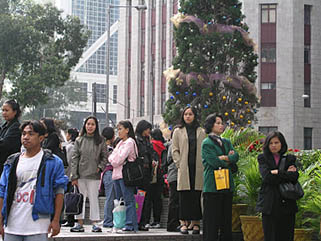QUIZ II
12. The reproductive organ of a flower.
a. pistil b. stamen c. egg cell d. sperm cell
13. The female sex cell is the
a. stamen b. egg cell c .pistil d. sperm cell
14 The Female reproductive organ of the flower is the
a. ovary b. stamen c. pistil d. anther
15. The male sex cell is the
a. egg cell b. pollen c. sperm cell d. ovules
16. The process by which the pollen grain is transferred from the anther of a flower to the stigma of another flower is called.
a. reproduction b. transformation c. fertilization d. pollination
17. The process by which the sperm cell unites with the egg cells is called
a. zygote b. pollination c. fission d. fertilization
18. After fertilization, the ovule hardens into a
a. bud b. seed c. fruit d. stem
19. The egg cell of a flower is found in the
a. sepals b. ovule c. petals d. stigma
20. A kind of reproduction in which no sex cells are involved
a. sexual b. fertilization c. asexual d. splitting
21. When plants are grown from their parts, the process is called
a. fission b. splitting c. budding b. vegetative reproduction
Quiz II I
22. _________________is the process by which living things produce their own kind.
23. _________________male cells of a flower, they are in pollen produced by the stamen.
24. _________________female cells of a flower, they are in ovules produced by the pistil.
24. _________________ only one parent is needed to reproduce a living thing.
26. _________________– two parents are needed to produce a new living thing
by
contributing one
sex cell each.
27. _________________the cell splits into two similar new cells.
28. _________________the bud splits off and then develops into a new cell.
29. _________________produce spores, each spoer grows into a complete new plant.
30. _________________a part of a plant grows into a new plant that is complete because of
the
process called regeneration.
31. _________________forms the outer part and consists of leaflike sepals.
32. _________________consists of the petals.
33. _________________make up a flower’s reproductive parts.
34. _________________this is the male part of the flower. It is made up of the filament and
anther, it is the pollen producing part of the plant. The number of
stamen is usually the same as the number of petals.
35. _________________this is the part of the stamen that produces and contains pollen. It is usually on top of a long stalk that looks like a fine hair.
36. _________________this is the fine hair-like stalk that the anther sits on top of.
37. _________________this is the female part of the flower. It is made up of the stigma, style, and ovary. Each pistil is constructed of one to many rolled leaflike structures.
38. _________________one of the female parts of the flower. It is the sticky bulb that you see in the center of the flowers, it is the part of the pistil of a flower which receives the pollen grains and on which they germinate.
39. _________________another female part of the flower. This is the long stalk that the stigma sits on top of.
40. _________________the part of the plant, usually at the bottom of the flower, which has the seeds inside and turns into the fruit that we eat. The ovary contains ovules.
41. _________________ Ovule- the part of the ovary that becomes the seeds.
42. _________________the colourful, often bright part of the flower. They attract pollinators and are usually the reason why we buy and enjoy flowers.
43. _________________the parts that look like little green leaves that cover the outside of a flower bud to protect the flower before it opens.
44. _________________reaches the ovule by growing down through the style, carrying the male gametes inside.
45. _________________a flower that has either all male parts or all female parts, but not both in the same flower.
46. _________________a flower that has both the male parts and female parts in the same flower.
47. _________________is the transfer of pollen from a stamen to pistil.
48. _________________is the union of a sperm with an egg cell.
QUIZ IV
Two Kinds of Reproduction
49. ____________________________________
50. ____________________________________
Four Basic Method of Asexual Reproduction among Plants
51. ____________________________________
52. ____________________________________
52. ____________________________________
54. ____________________________________
Four Main Parts of Typical Flower
55. ____________________________________
56. ____________________________________
57. ____________________________________
58. ____________________________________
Parts of the Flower
59. ____________________________________
60.____________________________________
61.____________________________________
62.____________________________________
63.____________________________________
64.____________________________________
65. ____________________________________
66. ____________________________________
67. ____________________________________
68. ____________________________________
69.____________________________________
Flower Types
70. ____________________________________
71. ____________________________________
Two Main Steps in Flower Reproduction
72. ____________________________________
73.____________________________________









































